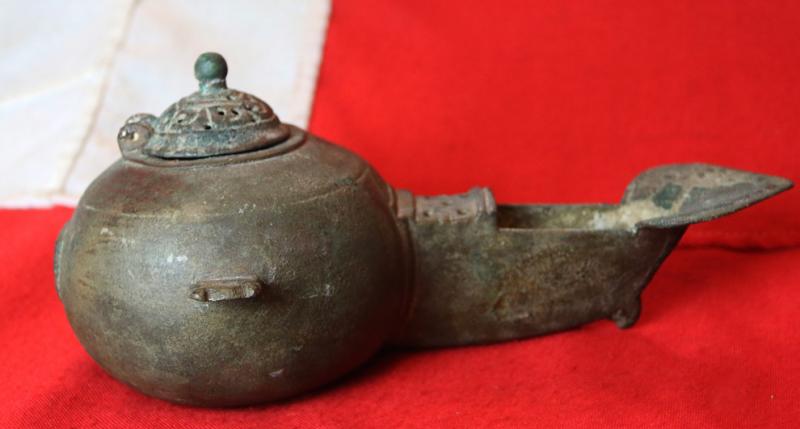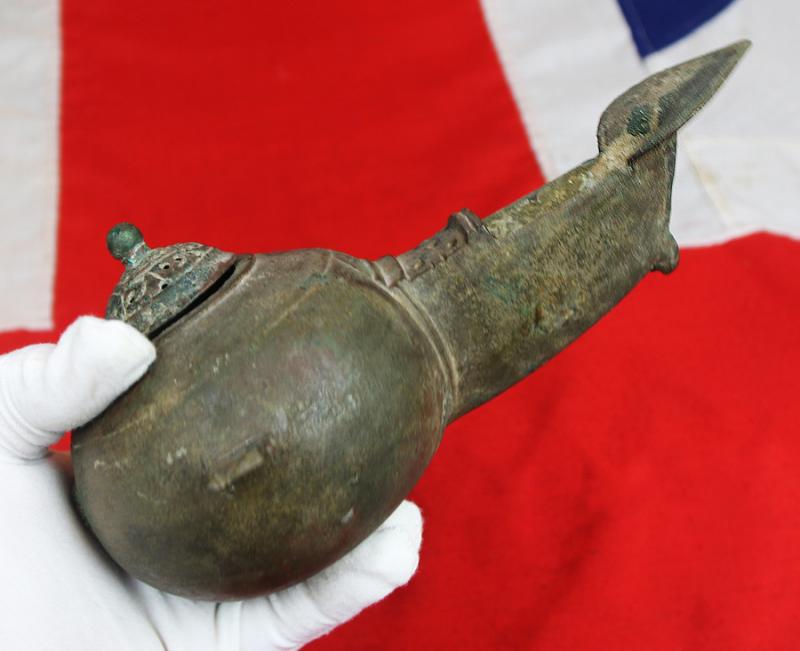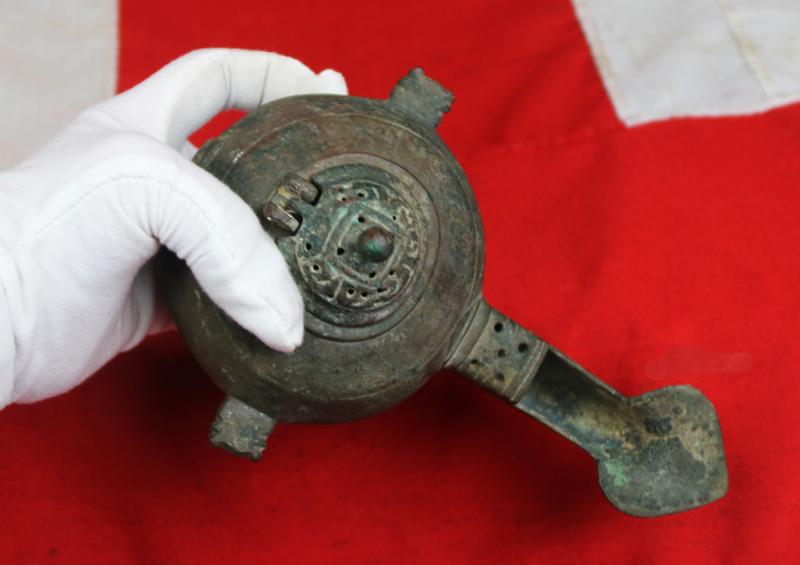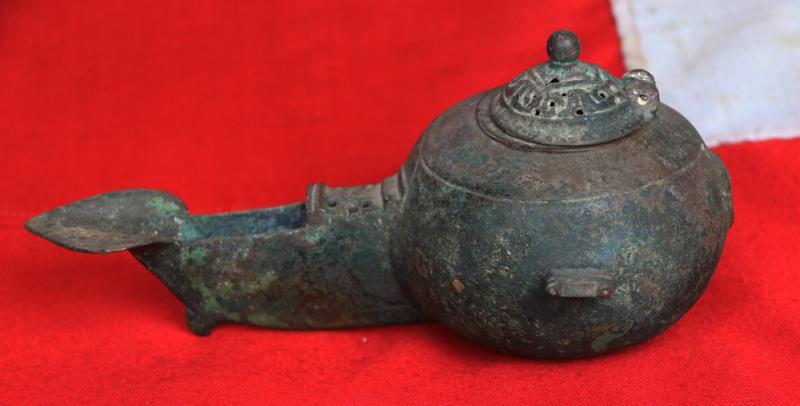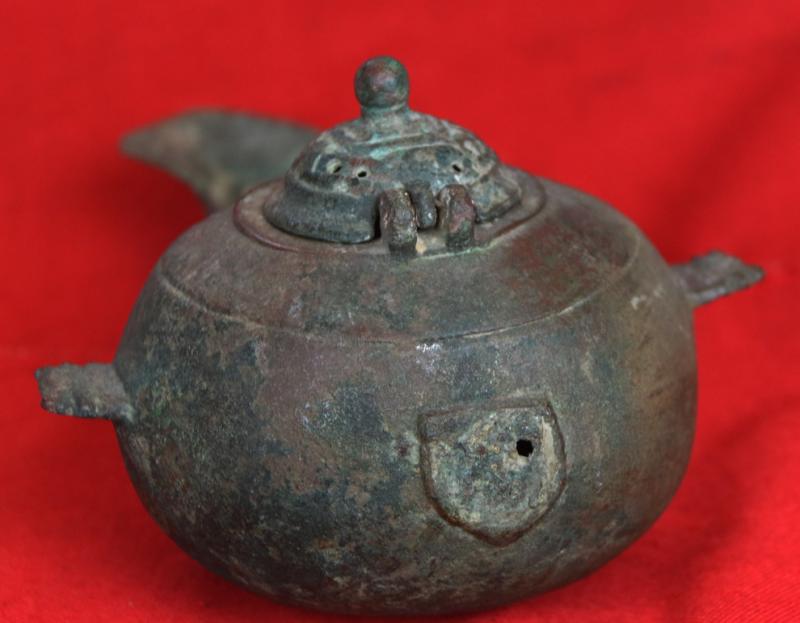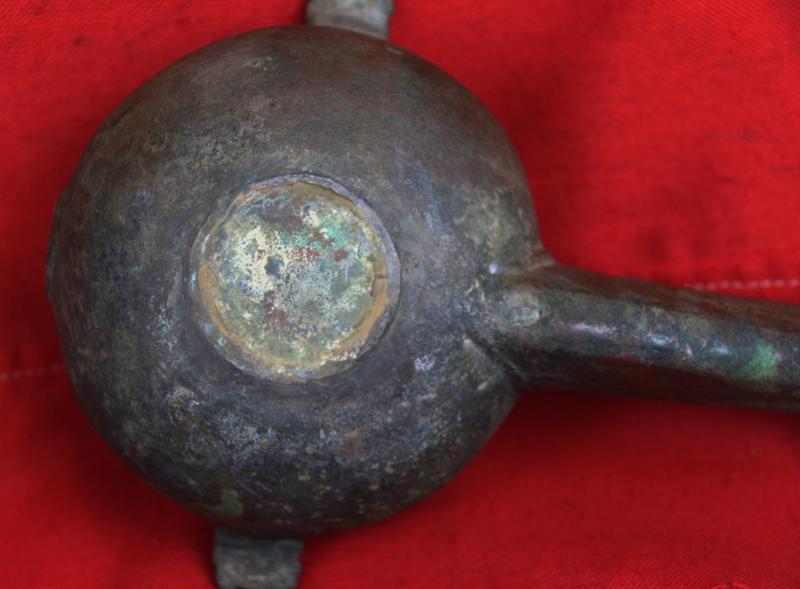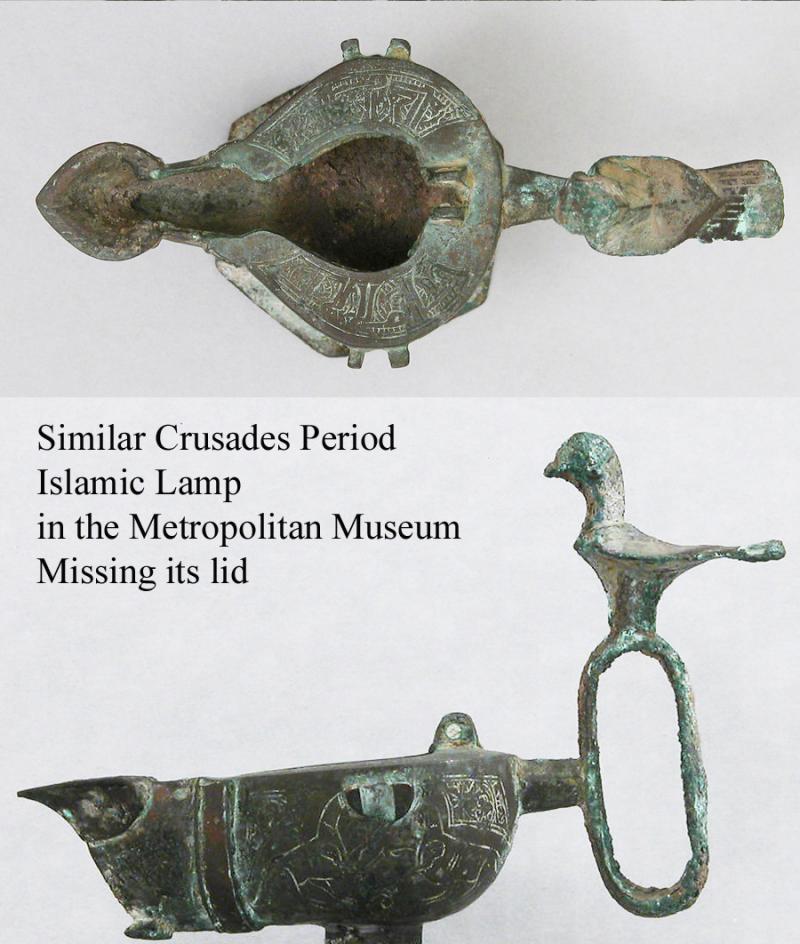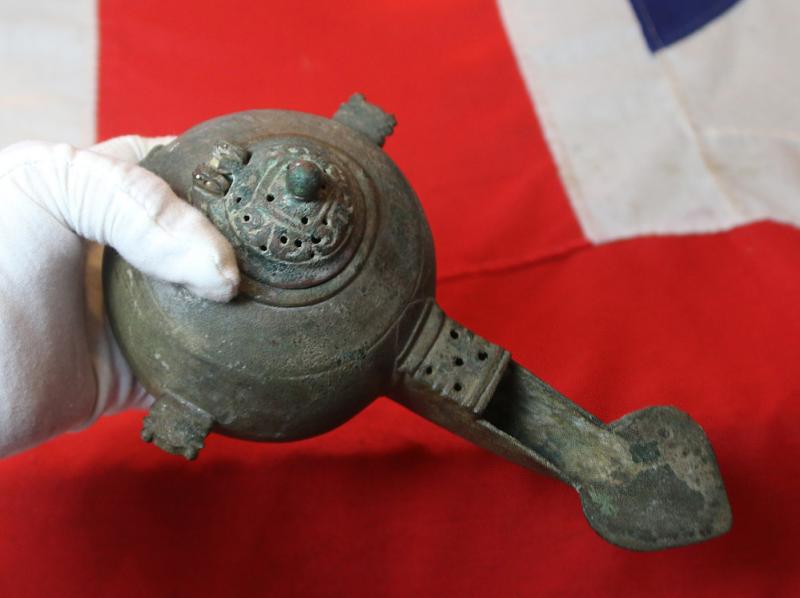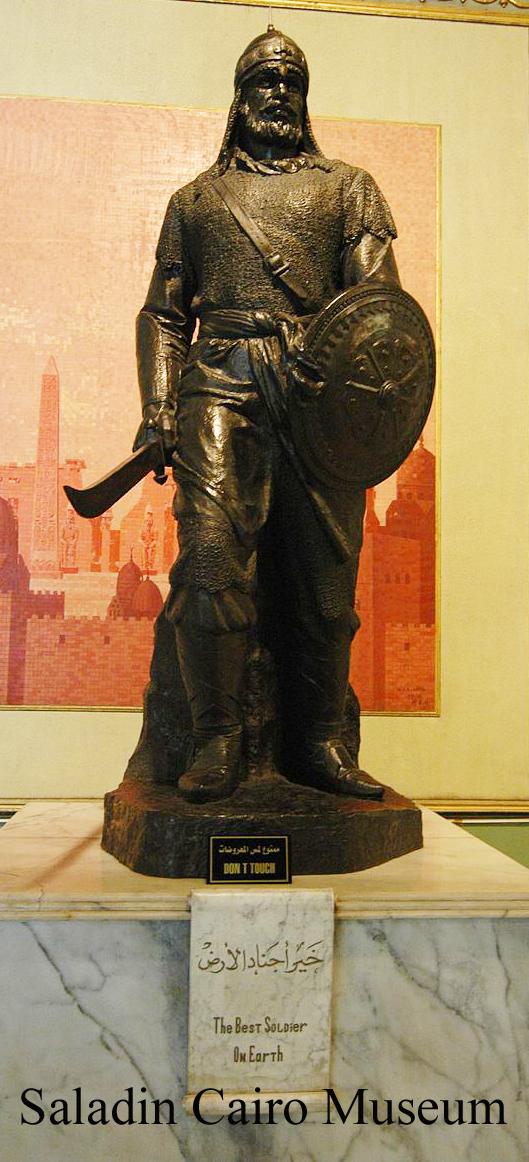A Superb Crusades-Saladin Period, Original Souvenir of the Holy Land Crusades period, Circa 900 Year Old Islamic Oil lamp
Circa 12th to 13th century original Islamic oil lamp with hinged original pierced lid. Exactly the form of lamp used by the forces of Saladin when he was fighting against the invading Crusaders. The Crusades were a series of religious wars initiated, supported, and sometimes directed by the Latin Church in the medieval period. The best known of these Crusades are those to the Holy Land in the period between 1095 and 1291 that were intended to recover Jerusalem and its surrounding area from Islamic rule. Unsanctioned by the church, Popular Crusades of ordinary citizens were also frequent. Beginning with the First Crusade which resulted in the recovery of Jerusalem in 1099, dozens of Crusades were fought, providing a focal point of European history for centuries.
In 1095, Pope Urban II proclaimed the First Crusade at the Council of Clermont. He encouraged military support for Byzantine emperor Alexios I against the Seljuk Turks and called for an armed pilgrimage to Jerusalem. Across all social strata in western Europe, there was an enthusiastic popular response. The first Crusaders had a variety of motivations, including religious salvation, satisfying feudal obligations, opportunities for renown, and economic or political advantage. Later crusades were generally conducted by more organized armies, sometimes led by a king. All were granted papal indulgences. Initial successes established four Crusader states: the County of Edessa; the Principality of Antioch; the Kingdom of Jerusalem; and the County of Tripoli.
The Crusade itself was long and exhausting, despite the obvious, though at times impulsive, military genius of Richard I (the Lion-Heart). Therein lies the greatest—but often unrecognised—achievement of Saladin. With tired and unwilling feudal levies, committed to fight only a limited season each year, his indomitable will enabled him to fight the greatest champions of Christendom to a draw. The Crusaders retained little more than a precarious foothold on the Levantine coast, and when King Richard left the Middle East, in October 1192, the battle was over. Saladin withdrew to his capital at Damascus. Under Saladin's command, the Ayyubid army defeated the Crusaders at the decisive Battle of Hattin in 1187, and thereafter wrested control of Palestine—including the city of Jerusalem—from the Crusaders, who had conquered the area 88 years earlier. Although the Crusader Kingdom of Jerusalem continued to exist until the late 13th century, its defeat at Hattin marked a turning point in its conflict with the Muslim powers of the region. Saladin died in Damascus in 1193, having given away much of his personal wealth to his subjects. He is buried in a mausoleum adjacent to the Umayyad Mosque. Saladin has become a prominent figure in Muslim, Arab, Turkish and Kurdish culture, and has been described as the most famous Kurd in history. The Crusader presence remained in the region in some form until the fall of Acre in 1291. After this, there were no further crusades to recover the Holy Land.
there is a most similar example in the Metropolitan Museum of Art although lacking its lid, but still retaining a handle. Our example still has it original pierced hinged lid present, but the handle and foot lacking.
Richard Lassels, an expatriate Roman Catholic priest, first used the phrase “Grand Tour” in his 1670 book Voyage to Italy, published posthumously in Paris in 1670. In its introduction, Lassels listed four areas in which travel furnished "an accomplished, consummate traveler" with opportunities to experience first hand the intellectual, the social, the ethical, and the political life of the Continent.
The English gentry of the 17th century believed that what a person knew came from the physical stimuli to which he or she has been exposed. Thus, being on-site and seeing famous works of art and history was an all important part of the Grand Tour. So most Grand Tourists spent the majority of their time visiting museums and historic sites.
Once young men began embarking on these journeys, additional guidebooks and tour guides began to appear to meet the needs of the 20-something male and female travelers and their tutors traveling a standard European itinerary. They carried letters of reference and introduction with them as they departed from southern England, enabling them to access money and invitations along the way.
With nearly unlimited funds, aristocratic connections and months or years to roam, these wealthy young tourists commissioned paintings, perfected their language skills and mingled with the upper crust of the Continent.
The wealthy believed the primary value of the Grand Tour lay in the exposure both to classical antiquity and the Renaissance, and to the aristocratic and fashionably polite society of the European continent. In addition, it provided the only opportunity to view specific works of art, and possibly the only chance to hear certain music. A Grand Tour could last from several months to several years. The youthful Grand Tourists usually traveled in the company of a Cicerone, a knowledgeable guide or tutor.
The ‘Grand Tour’ era of classical acquisitions from history existed up to around the 1850’s, and extended around the whole of Europe, Egypt, the Ottoman Empire, and the Holy Land.
Code: 24118
645.00 GBP

